Eikon Audio IMAGE.5 System
High-Fidelity Performance With Lifestyle Simplicity
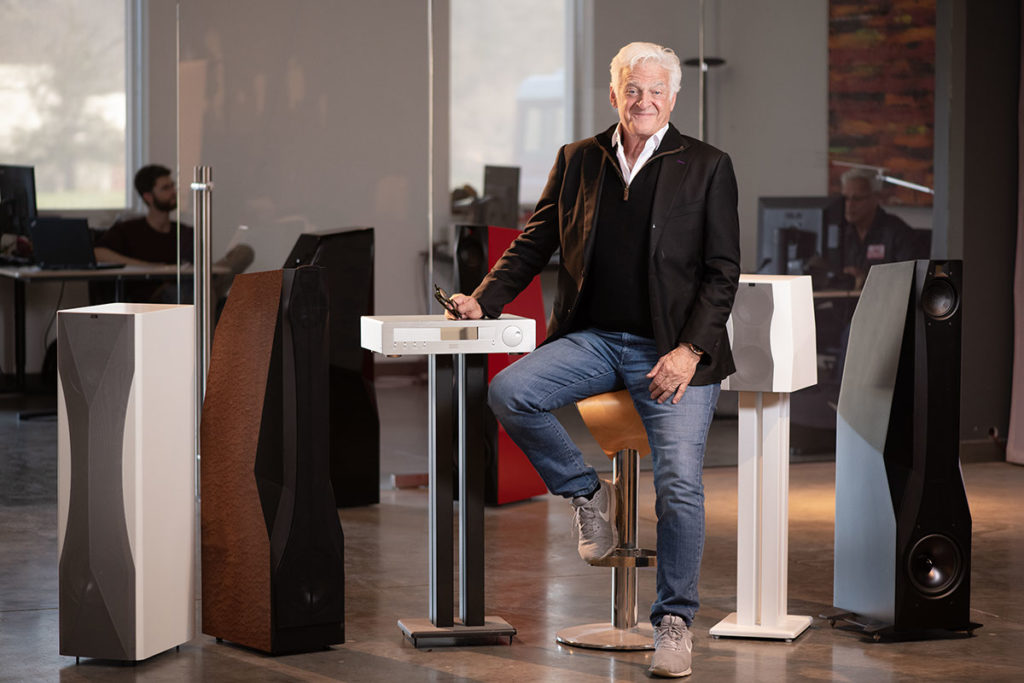
Genesis
If you are unfamiliar with the name Gayle Martin Sanders, the driving force behind the innovative and distinctive Eikon Audio systems under examination here, please give me just a moment to share an amazing accomplishment.
Though there had been a number of Electrostatic Loudspeakers, or ESLs, introduced to the market by the late 1970s, Gayle was bothered by the myriad of problems that still plagued all the existing designs. ESLs are speakers that use no box, no separate dynamic drivers, and instead, employ a large, super-thin membrane to move air and generate sound. That era’s ESLs all suffered from several deficiencies, problems like extreme directionality, very moderate power handling, poor bass extension, and novel electrical characteristics that made them nightmares for amplifiers. Many suffered high-voltage breakdown, or “arcing,” and they all had serious dependability issues. Gayle was convinced that there could, there should be a better way.
Teaming with Electrical Engineer Ronald Logan Sutherland, they accepted the challenging goals of creating an ESL that would offer greater durability, better power handling and dispersion, and more broadband accuracy. After what would eventually come to be nearly five years of persistent work, including reaching out to NASA and other government agencies for access to the latest materials, and ceaselessly applying and testing them, developing novel approaches and applications, all while holding down full-time jobs, they had done it. After validating and surpassing some of his goals and expectations, in 1983, the world was introduced to the Martin-Logan Monolith at that year’s summer Consumer Electronics Show in Chicago. Over the next two decades, the parade of advances to his designs, each even more successful than the last, some set standards that still stand to this today, was non-stop.
Gayle’s story is a textbook example of how one man’s determination, drive, inventiveness, ingenuity, and tenacity allowed him to realize his complex and remarkable vision, first starting the fledgling company, Martin-Logan, and then building that company into one of the most successful and iconic audio brands in the history of this industry. The story of Gayle’s success is one of the most inspiring tales in the entirety of the High-End Ethos. Spoiler alert…he’s done it again!
Imagining an Eikon
 After nearly two decades of daily immersive involvement helming Martin-Logan, Gayle decided he was ready for a break. He sold the iconic company and assumed that he would just ride off into his retirement. But, as a musician and music lover, still possessed of the same curiosity and motivations, he never fully disengaged from the industry. Over time, as the industry was becoming more and more comfortable with both the steadily advancing proficiencies of digital signal processing (DSP) and the acceptance and predominance of high-resolution music streaming, he had yet another inspiration.
After nearly two decades of daily immersive involvement helming Martin-Logan, Gayle decided he was ready for a break. He sold the iconic company and assumed that he would just ride off into his retirement. But, as a musician and music lover, still possessed of the same curiosity and motivations, he never fully disengaged from the industry. Over time, as the industry was becoming more and more comfortable with both the steadily advancing proficiencies of digital signal processing (DSP) and the acceptance and predominance of high-resolution music streaming, he had yet another inspiration.
As with the motivation behind creating a better ESL, his vision was both simple and elegant, even if its execution would prove to be every bit as challenging and complex as redefining the performance of the Electrostatic Loudspeaker had been decades earlier.
Once the kernel of his concept was planted, Gayle’s mind was soon racing with the possibilities presented by using the rapidly advancing field of digital signal processing to mitigate the multitude of problems encountered when designing traditional analog loudspeakers. In 2015 he was ready to follow his imagination once again. After assembling a qualified and like-minded team, he began to pursue this objective, one that would take full advantage of the now comprehensive and mature science of computational audio.
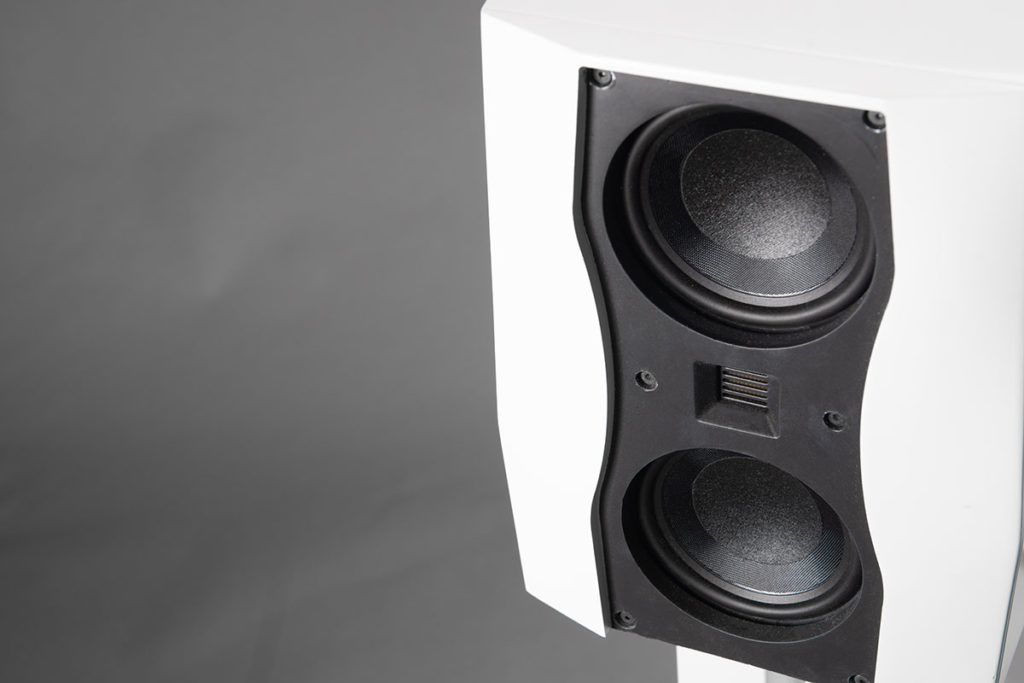 To understand what is meant by computational audio, let me employ an analogy to computational photography. Film cameras, the use of physical roll- or sheet film, and its subsequent need for chemical processing and printing, have all but vanished. Today, the predominance of digital photography, and the proliferation and maturation of the digital equivalent of the darkroom, imaging processing applications such as Photoshop, are the industry standard. In essence, it is the incorporation of high-powered computing and complex software to dynamically enhance the music listening experience.
To understand what is meant by computational audio, let me employ an analogy to computational photography. Film cameras, the use of physical roll- or sheet film, and its subsequent need for chemical processing and printing, have all but vanished. Today, the predominance of digital photography, and the proliferation and maturation of the digital equivalent of the darkroom, imaging processing applications such as Photoshop, are the industry standard. In essence, it is the incorporation of high-powered computing and complex software to dynamically enhance the music listening experience.
Gayle’s concept was to advance upon the art of passive speaker design by building a pair of speakers that would be the equivalent of a digital Nikon or Canon DSLR and manage the audio signal they received with the equivalent of today’s digital imaging processing applications. Enter the Eikon IMAGE speaker and the new Eikontrol2, the second generation Eikontrol.
Now, much as the ELS landscape had been when he first found it and started Martin-Logan, there were already manufacturers experimenting with digital solutions. Some of these companies offered an updated version of the receiver or integrated amplifier, basically, a computer that would render signal processing. That adapted signal would then be handed off to your existing amplifiers, or, using some form of internal Class-D amplification, be used to directly drive your chosen loudspeakers. Others had attempted to put both the computational processing power and amplification in their loudspeakers, allowing you to use your existing sources and electronics.
I’ve heard many of these other approaches, in my reference system, at shows, and in private installations. If I’m honest, every iteration I’ve heard, to some varying degree or another, while offering some limited enhancements to the problems they are attempting to digitally address, all reveal themselves to sound like what they are – digital band-aides. None of these other tactics have been successful in delivering a sonic tapestry that sounds as natural, organic, and genuine as the original untreated signal provides. They have all been plagued by blatantly obvious artifacts betraying the ineffectual use and power (or both!) of the processing being applied. That is until I heard the Eikon systems…
Computational Audio
When I first heard the Eikon, even in its later prototypical revisions, I was exhilarated by the results, so much so that I told Gayle that his was the most effective and musical application of DSP that I’d yet heard.
I propose that the secret to the undeniable success of Gayle’s more than a merely progressive concept is the wholeness of the Eikon approach; it does not offer a single point of redress like most of its contemporaries, it is instead a system. First, this new speaker houses several super-efficient, high-powered, and remarkably compact amplifiers, one each to power every individual driver in its notably inert ceramic-composite enclosure. To complete its magic, the heart of the system is the new Eikontol2 module, looking much like the more traditional “integrated amplifier.” While free of the duty of amplification, the sophisticated Eikontol2 plays a very complex and powerful part, essentially that of a preamp, processor, and DAC; its primary role being the management of the advanced DSP and psychoacoustic based algorithms that are applied to any input signal.
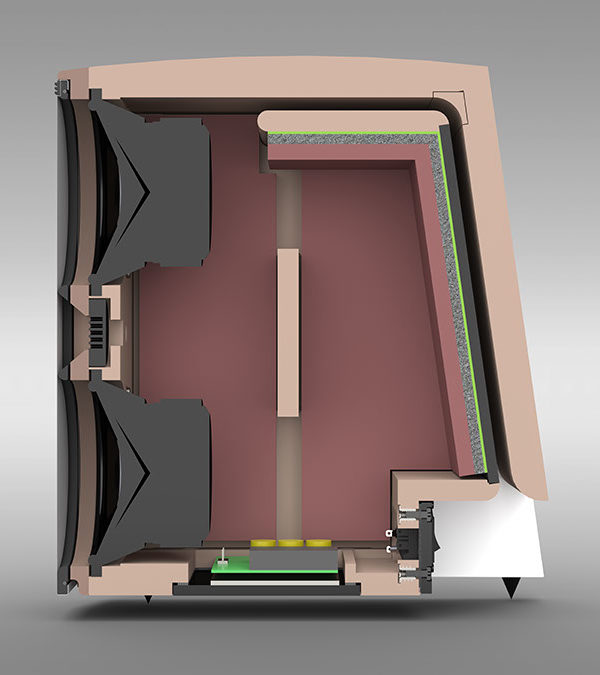 With the Eikontol2 digital engine, every source you use, even something like your existing turntable, whose signal is transformed to digital using a refined analog to digital converter, may then be corrected using proprietary filtering, RFI and EMI isolation, and ultra-accurate reclocking.
With the Eikontol2 digital engine, every source you use, even something like your existing turntable, whose signal is transformed to digital using a refined analog to digital converter, may then be corrected using proprietary filtering, RFI and EMI isolation, and ultra-accurate reclocking.
The Eikon systemic approach allows for signal correction and alignment in both the amplitude and the time domain as it is sent to each individual driver to within an accuracy of 1/100th of a microsecond! That is just 10 nanoseconds, expressed as 0.00000001 seconds! Applying its ultra-precise DSP based crossovers, the Eikontol2 can achieve a signal purity and precision that is unheard of when compared to what may be achieved using traditional passive crossover techniques because it is not subjected to the otherwise insurmountable common losses, time-delays, and phase related issues that are electrically inherent in passive crossover design. Pretty impressive, right?
Now, what if there was a way to counter, to significantly nullify, all the acoustic problems created by your listening room, including those complications exacerbated by where you choose, or need, to place the speakers? Music lovers like myself listen in dedicated, treated listening spaces, after taking the time and effort to address room loading, boundary and proximity issues, and the nodal issues affected by the room’s shape, size, and symmetry (or lack thereof). We spend hours finding just the right placement for the speakers, a location where their interface with the room yields the best, flattest, most impactful bass, the most uncolored and textured midrange, and open, airy, extended treble. What if you don’t have that luxury? What if your placement of the speakers is informed by your need to accommodate furnishings, traffic patterns, or the aesthetics of a pleasing appearance?
Breathe easy; the Eikontol2 has you covered! Its 64-Bit DSP engine allows for the real-time processing of massive amounts of data, all interpolated using its powerful “Wavelet” room analysis, the most efficient tool for signal and image processing on planet Earth today.
 Using the included calibrated microphone, the Eikontol2’s wavelet analysis based “Space-Time Room Optimization” can actually “listen” to your room once you’ve got it all set up. This powerful and transformative computational technology has the ability to analyze any irregularities as they build in your room, millisecond by millisecond. Once it has captured a complete record of what is going on in your room, it is then able to connect to powerful servers via the internet and correct phase-related anomalies, in both amplitude and time, including room-generated time smear. It has the power and ability to digitally compensate for your speaker’s time alignment, as well as any other phase anomalies of your chosen listening space, greatly reducing and ameliorating room-generated bass loading, frequency imbalance, and image blurring.
Using the included calibrated microphone, the Eikontol2’s wavelet analysis based “Space-Time Room Optimization” can actually “listen” to your room once you’ve got it all set up. This powerful and transformative computational technology has the ability to analyze any irregularities as they build in your room, millisecond by millisecond. Once it has captured a complete record of what is going on in your room, it is then able to connect to powerful servers via the internet and correct phase-related anomalies, in both amplitude and time, including room-generated time smear. It has the power and ability to digitally compensate for your speaker’s time alignment, as well as any other phase anomalies of your chosen listening space, greatly reducing and ameliorating room-generated bass loading, frequency imbalance, and image blurring.
But enough about the tech, by now you should have gathered a substantial sense of just how unconventional and progressive the Eikon system is. Honestly, you don’t need to understand – or even care about – how Eikon accomplishes the distinct sonic benefits it routinely delivers. What is important is your ability to enjoy what this ingenious, intricate, and inventive engineering and powerful technology delivers, an otherwise unprecedented degree of extraordinary fidelity, provided with convenience and ease, in any space!
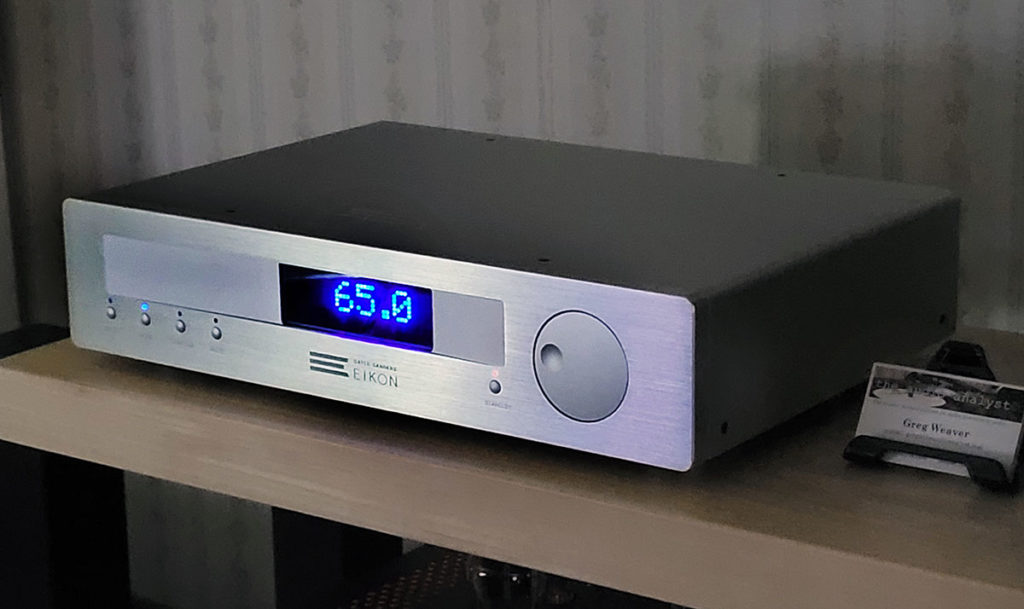 While it may be difficult to believe, this remarkably superbly performing and sublimely easy-to-use complete music system can be yours for just $12,000 (without the optional stands)! Umm, I use interconnects between components in my reference system that are more expensive!
While it may be difficult to believe, this remarkably superbly performing and sublimely easy-to-use complete music system can be yours for just $12,000 (without the optional stands)! Umm, I use interconnects between components in my reference system that are more expensive!
Lifestyles
The original Lifestyle speaker approach came from Bose in the 1990s. To them, the term described a speaker system designed for minimal visual impact, permitting greater ease of integration, allowing them to work in any space, formal or otherwise, without visually dominating or taking it over.
These systems would use anywhere from two (for early stereo applications) to five small satellite speakers (for early home theater surround installations), with a compact subwoofer. The satellites were typically a pair of three-inch plastic cubes, each containing a two-and-one-half inch paper cone driver, mounted one atop the other, with a swivel pivot between the two to allow for wider dispersion. The woofer was also compact, on the order of sixteen inches tall, by eight inches wide, and some twenty-four inches deep, leveraging a seventh-order bandpass loading, typically with a pair of five-and-a-quarter inch, foam surround, high-excursion, paper cone woofers, powered by an onboard amplifier.
As you might imagine, using two-and-a-half-inch drivers required massive amounts of equalization, implemented by circuitry also housed in the powered subwoofer module, to even approach some semblance of full frequency response. The subwoofer, by stipulation of the chosen acoustical alignment, and by employing such physically small drivers, produced a sound that audiophiles describe as “one-note” bass. Finally, given the diminutive drivers and excessive equalization, dynamics were also compressed to near lifeless. While such systems were both extremely easy to make disappear in a formal living space, they only offered adequate enough performance for background music for dinner parties. They simply could not satisfy a critical listener, and as such, they have pretty much disappeared from their once widespread acceptance.
Today, the term is more applicable to a newer category of speakers such as the Sonos smart wireless speakers, the Apple HomePod devices, or the Amazon Alexa smart speaker family. Now, while these devices clearly offer convenience and ease of placement, few of them sound even as good as the seriously compromised Bose Lifestyle systems did. While such conveniences may be adequate for hearing the current weather report, the local news, or managing room lighting, delivering high fidelity sound was never in the cards. As such, they deserve no further consideration from an avid music lover.
The Soul of a New Machine
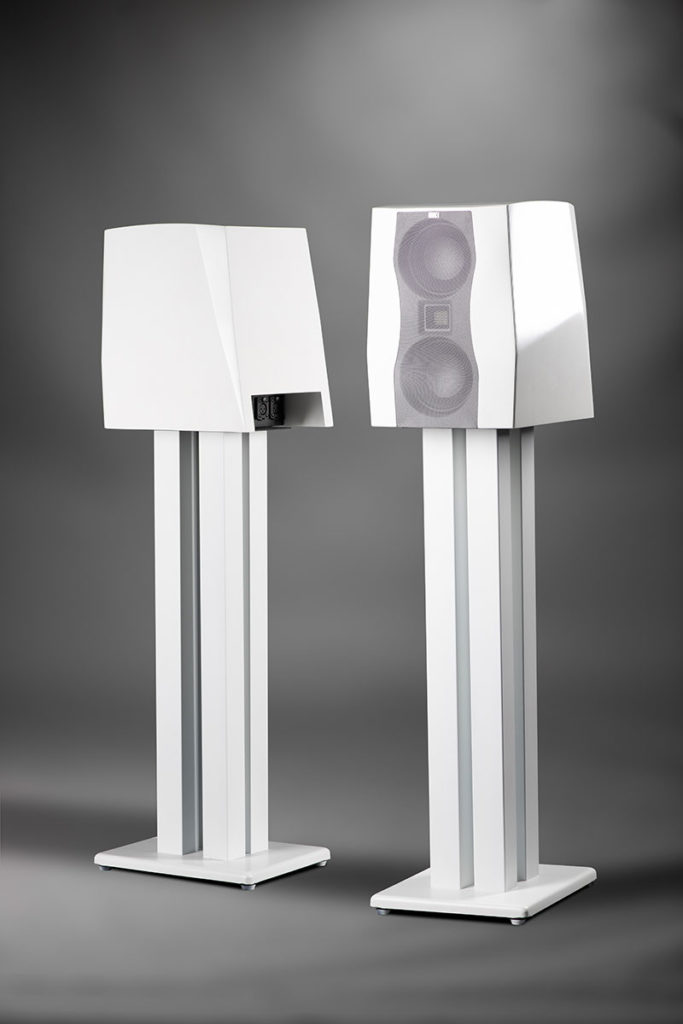 The Image.5 system consists of two beautiful Active Digital Monitors, available in either a matte black or white finish, each a beautifully contoured nine-and-three-quarter inches wide, standing thirteen inches tall, and twelve inches deep, with a front baffle that is swept back several degrees, bottom to top. Under its precision-fitted, magnetically attached grill is a carefully sourced one-inch Air Motion Transformer ribbon super tweeter. Two five-and-a-quarter inch, hi-excursion, low distortion woofers are placed concentrically, one above, the other below, that exceptional ribbon. Lastly, a custom interface on the bottom rear allows connections for their included AC and speaker cables, and the rocker power switch.
The Image.5 system consists of two beautiful Active Digital Monitors, available in either a matte black or white finish, each a beautifully contoured nine-and-three-quarter inches wide, standing thirteen inches tall, and twelve inches deep, with a front baffle that is swept back several degrees, bottom to top. Under its precision-fitted, magnetically attached grill is a carefully sourced one-inch Air Motion Transformer ribbon super tweeter. Two five-and-a-quarter inch, hi-excursion, low distortion woofers are placed concentrically, one above, the other below, that exceptional ribbon. Lastly, a custom interface on the bottom rear allows connections for their included AC and speaker cables, and the rocker power switch.
Because my goal was to employ them in a very traditional application first, as stand-alone monitors in my enormous dedicated listening space, I opted for the custom stands. Once conveniently secured to the stands using the included hardware, the beautiful IMAGE.5 monitors were securely isolated and elevated some twenty-nine inches off my floor, placing the tweeters at the optimum listening height. So, why are the stands optional? Most will choose to install the speakers on a countertop, shelf, or in a bookcase, placements that can benefit from sound-optimized presets built into the Eikontol2, in which case they would go unused and be an unnecessary expense.
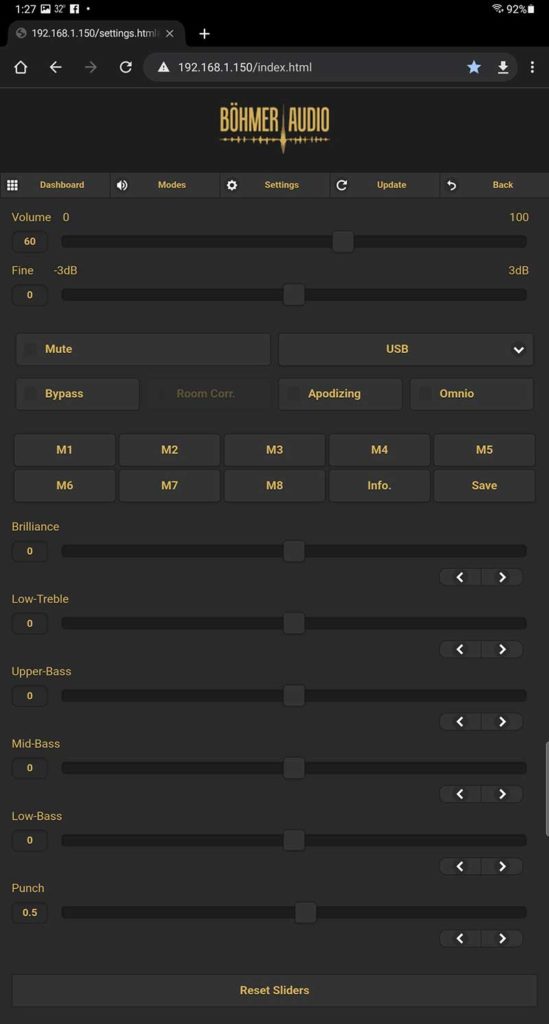 Next, the Eikontol2, a sleek and stylish thirteen-and-a-half-pound component that is seventeen-and-a-half inches wide, stands a scant three-and-three-quarters of an inch tall, by just eleven and three-quarter inches deep. It assumed its station to the left of the top shelf of my equipment stand. Connections were a breeze. I connected it to my local network via its RJ-45 Ethernet jack. Next, I connected my sources, my music server via its USB cable, and my turntable via one of several single-ended RCA input jacks. Next, I ran the included XLR terminated cables from their labeled outputs on the rear of the Eikontol2 to the corresponding inputs on each speaker cabinet. Finally, I connected the power adapter and, after switching on the amplifiers using the illuminated red rocker switch on the IMAGE.5 speakers rear panel, I turned on the Eikontol2.
Next, the Eikontol2, a sleek and stylish thirteen-and-a-half-pound component that is seventeen-and-a-half inches wide, stands a scant three-and-three-quarters of an inch tall, by just eleven and three-quarter inches deep. It assumed its station to the left of the top shelf of my equipment stand. Connections were a breeze. I connected it to my local network via its RJ-45 Ethernet jack. Next, I connected my sources, my music server via its USB cable, and my turntable via one of several single-ended RCA input jacks. Next, I ran the included XLR terminated cables from their labeled outputs on the rear of the Eikontol2 to the corresponding inputs on each speaker cabinet. Finally, I connected the power adapter and, after switching on the amplifiers using the illuminated red rocker switch on the IMAGE.5 speakers rear panel, I turned on the Eikontol2.
On startup, the large display shows the system status, including the IPv4 address dynamically assigned by your network. Unless you’ve done something elegant to your home network, that address will look something like 192.168.XXX.XXX, and unless it is disconnected from your network for some extended length of time, that address should remain the same. Make a note of that address, as it is how you will use your smartphone or tablet as the remote control for your Eikon system.
To access control of your system, simply open your favorite browser on your smartphone or tablet, enter that IPv4 address in the address bar (not the search bar), and hit enter. If you’ve typed it correctly, you will see the Dashboard Settings page of the Eikontol2.
Though there are redundant options on the face of the Eikontol2, this is your system command center. Using this interface, you can do everything with your Eikon system – and from anywhere your two devices are connected to the same network! You can manage volume, access source selection, and muting. You have access to its six-band equalization settings, with the option to save preset sonic settings. Here, using the Settings tab, you can address things like your preferred default start-up volume or change the front panel display brightness. This is also where you’ll find the powerful Room Correction tool that walks you through, step by step, recording your room’s sound to be analyzed and corrected using the wavelet analysis based “Space-Time Room Optimization.”
Witness
My time in front of the remarkably unassuming IMAGE.5 system started by installing this elegant, diminutive musical solution in my rather large (46′ X 13′ x 7′ 4″) dedicated listening space. Once I had them in a previously known and particularly effective location, one that happens to be just inside and alongside my quarter-of-a-million dollar, six-hundred-pound reference speakers, it was time to light up this remarkable system.
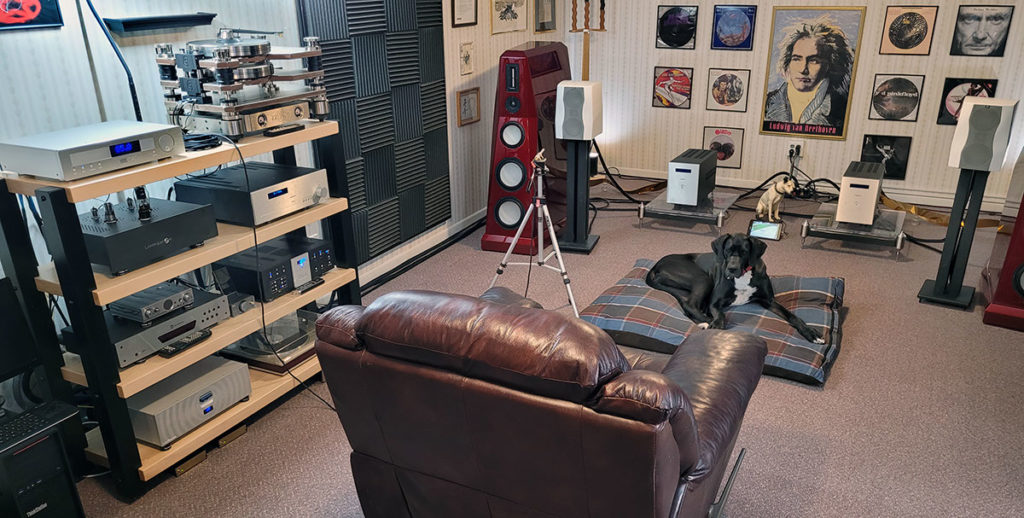
Right from the start, listening to either my music server or my turntable, before I had done anything to “dial” in its performance, I was very pleasantly surprised. Why? Because this system at once offered a sense of balance and coherence that doesn’t always congeal. Now, having had several notable experiences with the original, ground-breaking IMAGE1, and a listen to a prototypical IMAGE.5, I had expected its performance to be over-achieving. But DAMN! Within minutes I was being treated to some cutting-edge, surprisingly full-bodied performance from this system fronted by these petite monitors!
Well-informed audiophiles will understand that if a system can’t reproduce bass properly, generating low frequencies that are accurately extended, tonally truthful, and distinctly defined in pitch, the rest of the sonic performance suffers—from its overall fidelity of tone color and balance to the representation of the acoustic of recordings. But the bottom end on the IMAGE.5 was more than just solid sounding. Even from this diminutive pair of five-and-a-quarter inch mid-woofers, not only did it offer considerably deep extension, the quality of its pitch definition was outstanding. Keep in mind, this starting position had them almost seven feet away from the wall behind them, a location in which they were afforded no support by wall proximity! Yet I was hearing very articulate texture and solid tone color down into the sub-40 Hz region. It struck me that if you were somehow prevented from seeing their enclosures and were to make an assumption of their size solely based on what you were hearing, you could easily believe you were hearing a much larger, floor-standing loudspeaker.
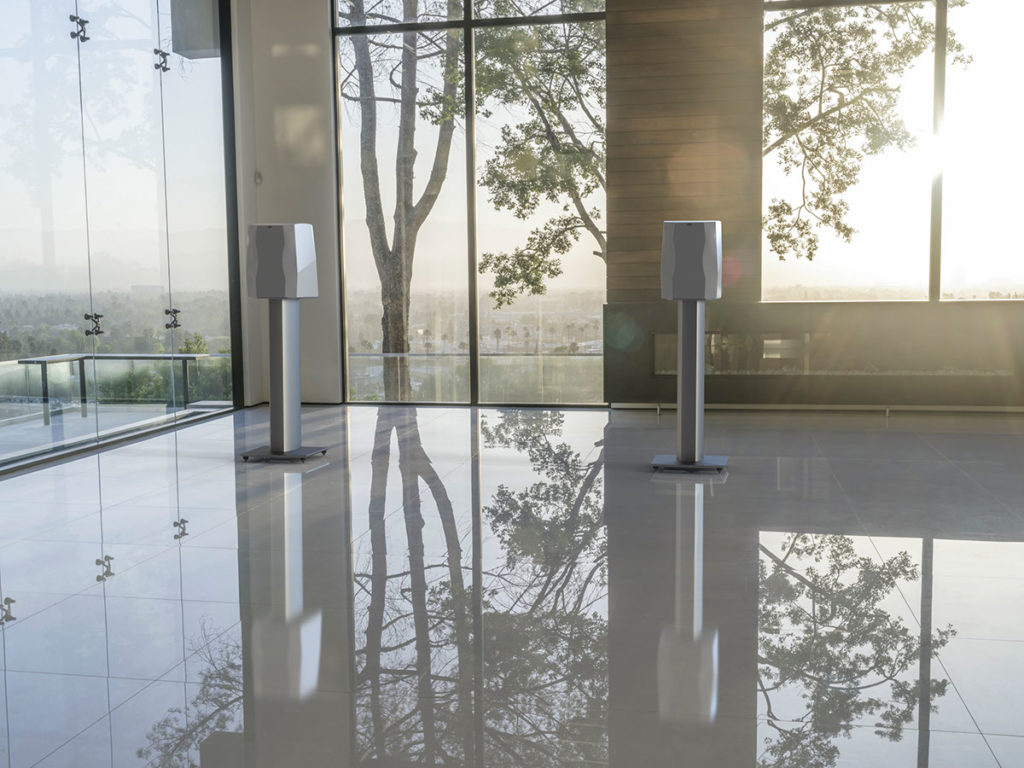
Moving from one pleasant surprise to another, the all-important midrange is also markedly accomplished. This range is detailed and resolute, yet blustering with vitality and life, rich in detail while full of harmonic bloom. Instrument fundamentals from piano, violin, guitar, and the human voice, are all rendered most realistically, offered up with convincing texture and dimension. The IMAGE.5 possesses that all-too-elusive fine balance of expressiveness and bloom. Its sonic envelope is full of texture, expressed with warmth and a seductive naturalness, revealing a combination of both notably honest tone color conveyed with fine resolution and a resultant level of transparency no one would have any reason to expect from a system within its price range.
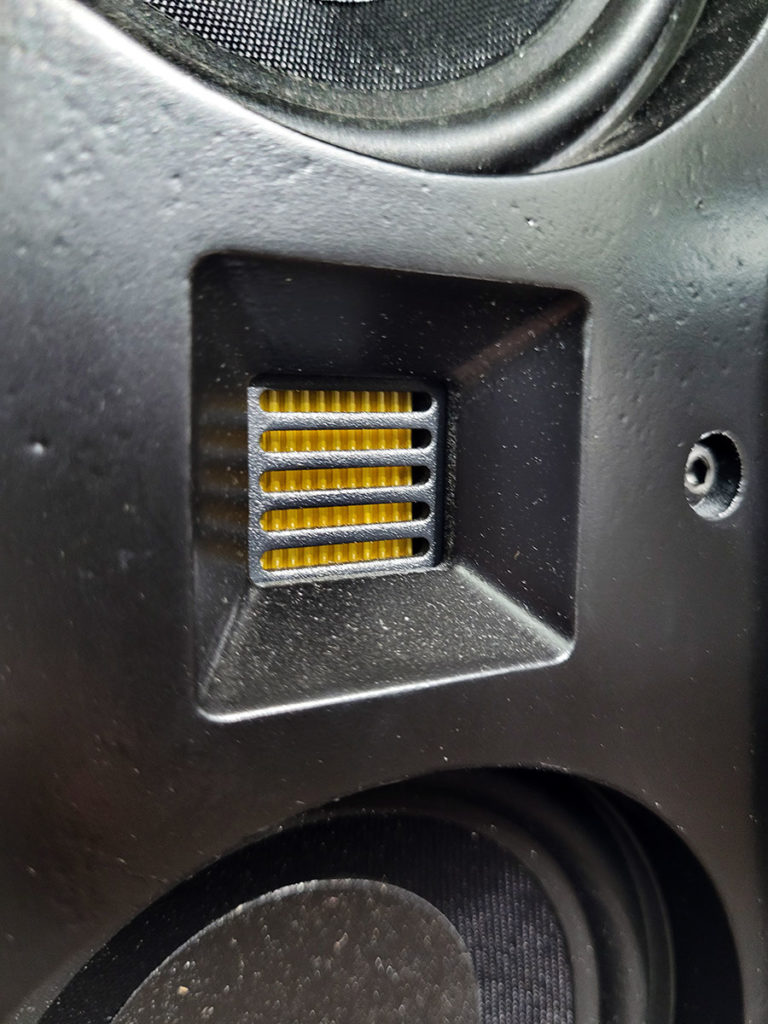 Its remarkably focused and detailed upper registers are presented smoothly, without etched sterility, unless it is an attribute of the recording under review. This AMT ribbon tweeter delivers both an open and engagingly airy top end. Listening to recorded ride cymbals with jazz or blues combos or triangles with classical recordings, you are treated to surprisingly pure and uncongested detail, leaden with vivid attack and ambient decay, again, recording permitting.
Its remarkably focused and detailed upper registers are presented smoothly, without etched sterility, unless it is an attribute of the recording under review. This AMT ribbon tweeter delivers both an open and engagingly airy top end. Listening to recorded ride cymbals with jazz or blues combos or triangles with classical recordings, you are treated to surprisingly pure and uncongested detail, leaden with vivid attack and ambient decay, again, recording permitting.
As well as the superlative accomplishment of its bass extension and impact, even in my exceptionally large space, they also convey an unexpected and enchanting sense of speed, one which translates to an infectious sense of immediacy and vitality. To me, this characteristic speaks to their remarkable overall tonal balance. Any speaker I have heard with even the slightest excess of energy from the upper bass through the lower mids always sounds sluggish and slow by comparison. None of that here.
One of my decisive tests for staging and imaging can be found with the LP Harp Attack (Alligator AL 4790). In the opening cut, “Down Home Blues,” the four voices and harmonicas of Cary Bell, Billy Branch, James Cotton, and Junior Wells are lined up, left to right. While I have heard slightly more realistic sizing of the portrayal of the human and instrumental voices, this Eikon system is simply magical in its ability to reconstitute each soloist’s placement within that soundstage with uncanny stability and faithful layering.
It wasn’t too long into my time in front of this stunning little system’s resultant performance that it had me reflecting upon its similarities to the accomplishments of the GamuT RS3i, an award-winning $20,000 monitor designed by my friend Benno Baun Meldgaard, now the senior designer at The Gryphon in Denmark.
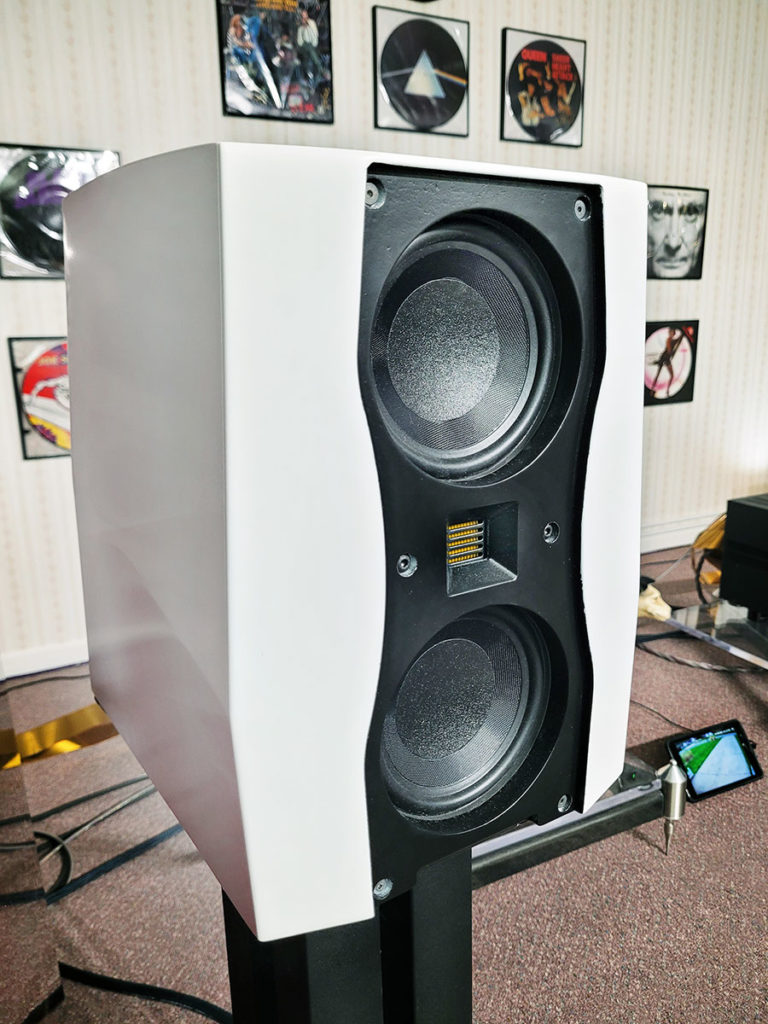 No, I’m not suggesting that the two are sonically equivalent! Rather, it was the IMAGE.5s exceptionally accomplished performance envelope that reminded me of that other world-class monitor. Both show a remarkable ability to effortlessly integrate and balance so many fine attributes, from a surprisingly broad frequency extension to a broadband tonal accuracy, with the ability to render shocking transparency while delivering compellingly convincing body and instrumental bloom, all-the-while, speaking with one singular, coherent voice. Like the remarkable RS3i, this bloodly little system just made MUSIC.
No, I’m not suggesting that the two are sonically equivalent! Rather, it was the IMAGE.5s exceptionally accomplished performance envelope that reminded me of that other world-class monitor. Both show a remarkable ability to effortlessly integrate and balance so many fine attributes, from a surprisingly broad frequency extension to a broadband tonal accuracy, with the ability to render shocking transparency while delivering compellingly convincing body and instrumental bloom, all-the-while, speaking with one singular, coherent voice. Like the remarkable RS3i, this bloodly little system just made MUSIC.
Taken as a whole, the IMAGE.5 compellingly renders timber, instrumental attack, body, and weight. And when combined with their class-leading resolve and articulation, given their reliance upon computation audio, this remarkably comprehensive and resourceful system won me over, bringing a smile to my face and keeping my foot tapping along over my time in front of it.
If you are wondering whom this system is suited for, I submit that it would make as perfect a first system for any Gen Z or Gen X member still living at home or in their first apartment or smaller house, as it would provide a sensible solution for that Baby Boomer who may have chosen to downsize into a more compact space. I also see it becoming a perfect second system for others, providing service in a den, bedroom, library, or for that vacation cottage, hunting lodge, or second home. It would even be ideal for the rural or suburban homeowner who keeps an urban apartment to ease their commute burden. What might you do with yours?
Afterglow
If you’ve gotten the impression that I was smitten with this system and its unprecedented level of performance, you’ve been paying attention. Though it simply cannot compete with the exotic hyper-audio rig I sit in front of daily, one that has a value about sixty times that of the IMAGE.5 system, this unpretentious, elegant, and ingenious system has still astonished me with its wunderkind, class-leading ability to make music.
And perhaps best of all, it is so bloody easy to realize its full potential. No room treatment, no hours spent trying to tune the room or find the best room placement for the speakers, and no worries about the system intruding on room aesthetics. Just honest high-fidelity sonic performance virtually anywhere you want music.
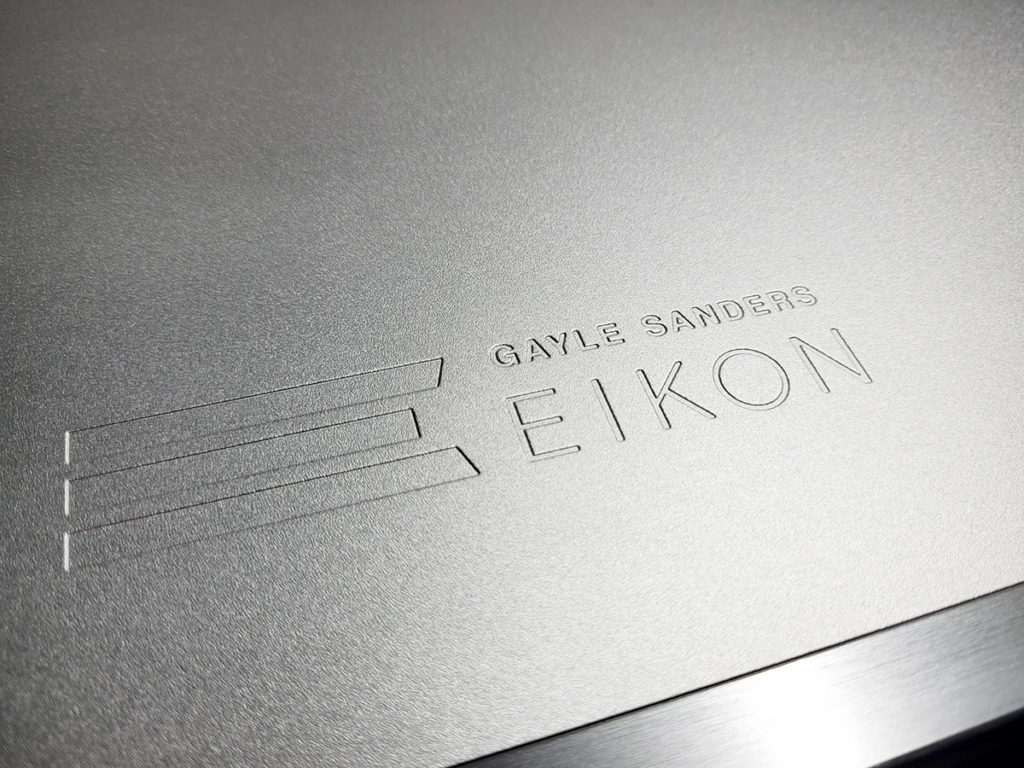 The Eikon approach is so over-achieving and musically engaging that I would suggest that even the most experienced and knowledgeable music lover could spend on the order of twice as much on separate components – speakers, electronics, cables, and ancillaries, in hopes of beginning to get into the same sonic ballpark, and they still may not achieve the same degree of fidelity this system offers right from its boxes.
The Eikon approach is so over-achieving and musically engaging that I would suggest that even the most experienced and knowledgeable music lover could spend on the order of twice as much on separate components – speakers, electronics, cables, and ancillaries, in hopes of beginning to get into the same sonic ballpark, and they still may not achieve the same degree of fidelity this system offers right from its boxes.
To suggest that Gayle’s vision has been realized and that the Eikon system is, to my ears and in my experience, the most comprehensive and successful application of the computational audio approach that I’ve yet heard would be doing it an injustice. The Eikon systems, including the original IMAGE1 system, represent the gold standard of such applications today, and in my view, have established a benchmark that other manufacturers will want to look to and reflect upon in their own work.
The unique Eikon approach reimagines the entire system, resulting in solutions that are both small in size yet unbelievably powerful. Where other manufacturers have only managed to address a portion of the digital puzzle, with Eikon, Gayle has realized what I see as a more correct and appropriate solution. By taking the holistic view, integrating all aspects of the system design, and focusing on the entire chain, from input, all the way through to the beautiful sound you finally hear in your space, Eikon has created a new performance milestone. Give them a listen and see if you don’t agree. Most enthusiastically recommended.
System Details
The Eikon IMAGE.5 specifications:
Active Digital Loudspeakers
1 Air Motion Transformer (ribbon design) super tweeter
2 – 5.25″ hi-excursion, low distortion woofers – dual-driver tuned port system
Cabinet construction – Super inert, ceramic-based constrained layer
Frequency response – 32Hz-45kHz +2/-3
Standard finishes – Matte White/Matte Black
Eikontol2 DSP control processor
Digital inputs: SPDIF (24-bit, 192 kHz), TosLink (24-bit, 96 kHz), USB (24-bit, 384 kHz), AES EUB (24-bit, 192 kHz), Roon endpoint with direct integration
Total System Price – $12,000 – optional monitor stands additional
 After nearly two decades of daily immersive involvement helming Martin-Logan, Gayle decided he was ready for a break. He sold the iconic company and assumed that he would just ride off into his retirement. But, as a musician and music lover, still possessed of the same curiosity and motivations, he never fully disengaged from the industry. Over time, as the industry was becoming more and more comfortable with both the steadily advancing proficiencies of digital signal processing (DSP) and the acceptance and predominance of high-resolution music streaming, he had yet another inspiration.
After nearly two decades of daily immersive involvement helming Martin-Logan, Gayle decided he was ready for a break. He sold the iconic company and assumed that he would just ride off into his retirement. But, as a musician and music lover, still possessed of the same curiosity and motivations, he never fully disengaged from the industry. Over time, as the industry was becoming more and more comfortable with both the steadily advancing proficiencies of digital signal processing (DSP) and the acceptance and predominance of high-resolution music streaming, he had yet another inspiration. To understand what is meant by computational audio, let me employ an analogy to computational photography. Film cameras, the use of physical roll- or sheet film, and its subsequent need for chemical processing and printing, have all but vanished. Today, the predominance of digital photography, and the proliferation and maturation of the digital equivalent of the darkroom, imaging processing applications such as Photoshop, are the industry standard. In essence, it is the incorporation of high-powered computing and complex software to dynamically enhance the music listening experience.
To understand what is meant by computational audio, let me employ an analogy to computational photography. Film cameras, the use of physical roll- or sheet film, and its subsequent need for chemical processing and printing, have all but vanished. Today, the predominance of digital photography, and the proliferation and maturation of the digital equivalent of the darkroom, imaging processing applications such as Photoshop, are the industry standard. In essence, it is the incorporation of high-powered computing and complex software to dynamically enhance the music listening experience. With the Eikontol2 digital engine, every source you use, even something like your existing turntable, whose signal is transformed to digital using a refined analog to digital converter, may then be corrected using proprietary filtering, RFI and EMI isolation, and ultra-accurate reclocking.
With the Eikontol2 digital engine, every source you use, even something like your existing turntable, whose signal is transformed to digital using a refined analog to digital converter, may then be corrected using proprietary filtering, RFI and EMI isolation, and ultra-accurate reclocking. Using the included calibrated microphone, the Eikontol2’s wavelet analysis based “Space-Time Room Optimization” can actually “listen” to your room once you’ve got it all set up. This powerful and transformative computational technology has the ability to analyze any irregularities as they build in your room, millisecond by millisecond. Once it has captured a complete record of what is going on in your room, it is then able to connect to powerful servers via the internet and correct phase-related anomalies, in both amplitude and time, including room-generated time smear. It has the power and ability to digitally compensate for your speaker’s time alignment, as well as any other phase anomalies of your chosen listening space, greatly reducing and ameliorating room-generated bass loading, frequency imbalance, and image blurring.
Using the included calibrated microphone, the Eikontol2’s wavelet analysis based “Space-Time Room Optimization” can actually “listen” to your room once you’ve got it all set up. This powerful and transformative computational technology has the ability to analyze any irregularities as they build in your room, millisecond by millisecond. Once it has captured a complete record of what is going on in your room, it is then able to connect to powerful servers via the internet and correct phase-related anomalies, in both amplitude and time, including room-generated time smear. It has the power and ability to digitally compensate for your speaker’s time alignment, as well as any other phase anomalies of your chosen listening space, greatly reducing and ameliorating room-generated bass loading, frequency imbalance, and image blurring. While it may be difficult to believe, this remarkably superbly performing and sublimely easy-to-use complete music system can be yours for just $12,000 (without the optional stands)! Umm, I use interconnects between components in my reference system that are more expensive!
While it may be difficult to believe, this remarkably superbly performing and sublimely easy-to-use complete music system can be yours for just $12,000 (without the optional stands)! Umm, I use interconnects between components in my reference system that are more expensive! The Image.5 system consists of two beautiful Active Digital Monitors, available in either a matte black or white finish, each a beautifully contoured nine-and-three-quarter inches wide, standing thirteen inches tall, and twelve inches deep, with a front baffle that is swept back several degrees, bottom to top. Under its precision-fitted, magnetically attached grill is a carefully sourced one-inch Air Motion Transformer ribbon super tweeter. Two five-and-a-quarter inch, hi-excursion, low distortion woofers are placed concentrically, one above, the other below, that exceptional ribbon. Lastly, a custom interface on the bottom rear allows connections for their included AC and speaker cables, and the rocker power switch.
The Image.5 system consists of two beautiful Active Digital Monitors, available in either a matte black or white finish, each a beautifully contoured nine-and-three-quarter inches wide, standing thirteen inches tall, and twelve inches deep, with a front baffle that is swept back several degrees, bottom to top. Under its precision-fitted, magnetically attached grill is a carefully sourced one-inch Air Motion Transformer ribbon super tweeter. Two five-and-a-quarter inch, hi-excursion, low distortion woofers are placed concentrically, one above, the other below, that exceptional ribbon. Lastly, a custom interface on the bottom rear allows connections for their included AC and speaker cables, and the rocker power switch. Next, the Eikontol2, a sleek and stylish thirteen-and-a-half-pound component that is seventeen-and-a-half inches wide, stands a scant three-and-three-quarters of an inch tall, by just eleven and three-quarter inches deep. It assumed its station to the left of the top shelf of my equipment stand. Connections were a breeze. I connected it to my local network via its RJ-45 Ethernet jack. Next, I connected my sources, my music server via its USB cable, and my turntable via one of several single-ended RCA input jacks. Next, I ran the included XLR terminated cables from their labeled outputs on the rear of the Eikontol2 to the corresponding inputs on each speaker cabinet. Finally, I connected the power adapter and, after switching on the amplifiers using the illuminated red rocker switch on the IMAGE.5 speakers rear panel, I turned on the Eikontol2.
Next, the Eikontol2, a sleek and stylish thirteen-and-a-half-pound component that is seventeen-and-a-half inches wide, stands a scant three-and-three-quarters of an inch tall, by just eleven and three-quarter inches deep. It assumed its station to the left of the top shelf of my equipment stand. Connections were a breeze. I connected it to my local network via its RJ-45 Ethernet jack. Next, I connected my sources, my music server via its USB cable, and my turntable via one of several single-ended RCA input jacks. Next, I ran the included XLR terminated cables from their labeled outputs on the rear of the Eikontol2 to the corresponding inputs on each speaker cabinet. Finally, I connected the power adapter and, after switching on the amplifiers using the illuminated red rocker switch on the IMAGE.5 speakers rear panel, I turned on the Eikontol2.

 Its remarkably focused and detailed upper registers are presented smoothly, without etched sterility, unless it is an attribute of the recording under review. This AMT ribbon tweeter delivers both an open and engagingly airy top end. Listening to recorded ride cymbals with jazz or blues combos or triangles with classical recordings, you are treated to surprisingly pure and uncongested detail, leaden with vivid attack and ambient decay, again, recording permitting.
Its remarkably focused and detailed upper registers are presented smoothly, without etched sterility, unless it is an attribute of the recording under review. This AMT ribbon tweeter delivers both an open and engagingly airy top end. Listening to recorded ride cymbals with jazz or blues combos or triangles with classical recordings, you are treated to surprisingly pure and uncongested detail, leaden with vivid attack and ambient decay, again, recording permitting. No, I’m not suggesting that the two are sonically equivalent! Rather, it was the IMAGE.5s exceptionally accomplished performance envelope that reminded me of that other world-class monitor. Both show a remarkable ability to effortlessly integrate and balance so many fine attributes, from a surprisingly broad frequency extension to a broadband tonal accuracy, with the ability to render shocking transparency while delivering compellingly convincing body and instrumental bloom, all-the-while, speaking with one singular, coherent voice. Like the remarkable RS3i, this bloodly little system just made MUSIC.
No, I’m not suggesting that the two are sonically equivalent! Rather, it was the IMAGE.5s exceptionally accomplished performance envelope that reminded me of that other world-class monitor. Both show a remarkable ability to effortlessly integrate and balance so many fine attributes, from a surprisingly broad frequency extension to a broadband tonal accuracy, with the ability to render shocking transparency while delivering compellingly convincing body and instrumental bloom, all-the-while, speaking with one singular, coherent voice. Like the remarkable RS3i, this bloodly little system just made MUSIC. The Eikon approach is so over-achieving and musically engaging that I would suggest that even the most experienced and knowledgeable music lover could spend on the order of twice as much on separate components – speakers, electronics, cables, and ancillaries, in hopes of beginning to get into the same sonic ballpark, and they still may not achieve the same degree of fidelity this system offers right from its boxes.
The Eikon approach is so over-achieving and musically engaging that I would suggest that even the most experienced and knowledgeable music lover could spend on the order of twice as much on separate components – speakers, electronics, cables, and ancillaries, in hopes of beginning to get into the same sonic ballpark, and they still may not achieve the same degree of fidelity this system offers right from its boxes.
